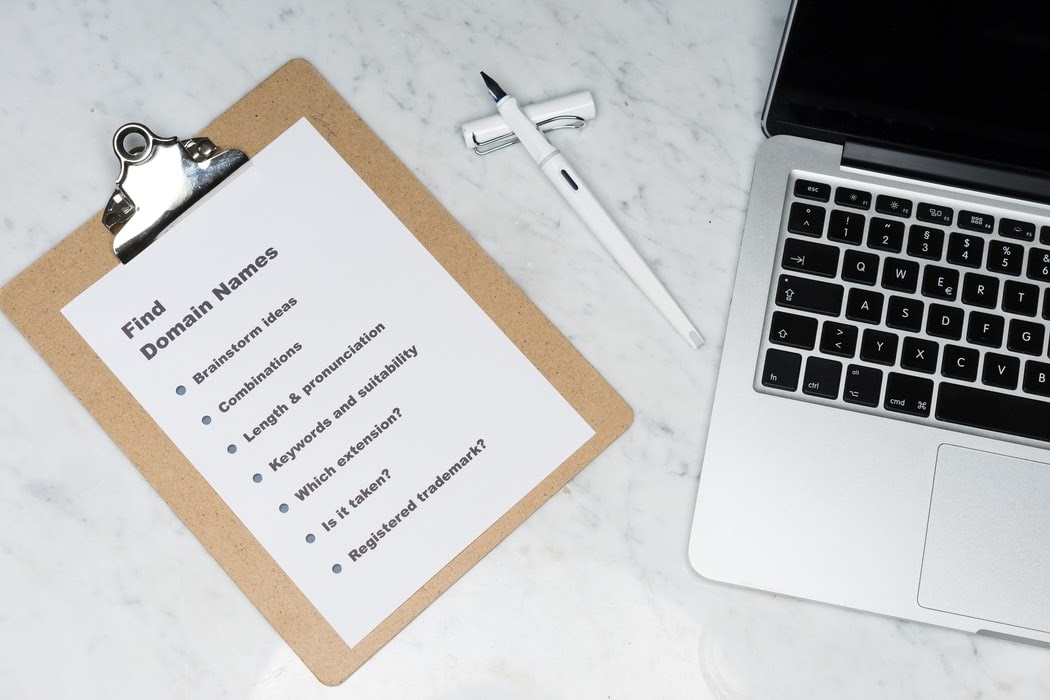Many business owners underestimate the importance of domain names. Whether you plan to start an online store or a blog, you’ll need a strong online presence and nowadays, one of the most effective methods of reaching potential customers is through a well-designed and maintained site.
Choosing and registering a domain should not be done in haste. Think of it as a valuable search and marketing tool that should bring visitors to your website. Careful research and deliberation are necessary, as the domain name may be one of the most important business decisions you make.
In this article, you will learn everything you need to know about domains, including tips on how to select the right one for your business and what steps you need to take in order to buy and register it.
What’s a Domain Name?
Before we get into more detail about the process of choosing, buying, and registering a domain name, let’s give an answer to the question: ‘What is a domain name?’
Each site has an IP address that points to the site’s location. These IP addresses are generally sets of numbers, which are quite difficult to remember, and that’s where domains come in. A system called DNS translates IP addresses into words that are much more simple to memorize, i.e. domains. Your domain name is what users will type into their web browsers to find your site. In other words, your domain name is your site’s address in the online world.
Each domain name consists of two parts:
- SLD (Second Level Domain), which is basically the name you select for your brand. It appears left of the domain extension and can have as many letters, special characters, and numbers as you want, but in general, it is better best to keep it short and simple.
- TLD (Top Level Domain), also known as extension, refers to the letters after the dot. The most commonly used TLDs include .com, .net, .org, .edu, and .gov. There are top-level domains for different countries as well (for instance, .au for Australia) and special niche TLDs such as .pizza or .coffee. All in all, you can choose from about 1,5k TLDs!
How Do You Choose the Right Domain for Your Website?
The domain you choose can have a huge impact on your online presence and, as a result, the success of your business. That’s why dedicating some time to find a domain that perfectly fits your business needs is vital. And yet, the process can be quite challenging.
Even though there’s a huge number of available domains out there, the majority of the popular, memorable ones are already taken. Luckily, with some creativity and with the help of a good domain name provider, you can find a relevant and cheap domain name for your business. Here’s what you should pay attention to when choosing the perfect domain for your website:
Think about the TLD
When it comes to TLDs (extensions), .com is the best option, with nearly 45% of all domains having it as an extension.
Even though, according to Google, your extension won’t have an influence on your rankings, .com is the extension that people expect to see and trust the most. However, if .com is not available for the SLD you’ve chosen, .org and .net are also pretty common and good alternatives.
In general, you should stay away from domain extensions such as .pizza and .club, unless you are really convinced they will somehow make your brand more successful.
Avoid generic domains
Remember, your domain is how users will find you online, remember you, and share your site with others. That’s why you need to come up with a name that’s creative, easy-to-remember, and matches your brand.
You should also view your domain as a long-term investment and avoid choosing one that includes the latest trendy catchphrase or a year. Think about where your brand or business might be in 5-10 years. For instance, if your company provides SEO services now, chances are you might expand your offerings in the future, so instead of using words like ‘SEO services’, opt for something like ‘online marketing.’
Make it easy to remember
The domain name you pick should be easy to remember but also easy to type and spell. Just think about the most popular sites in the world such as Amazon, Twitter, and Yahoo – each name is short, memorable, and easy to spell.
If you aren’t sure whether your domain checks out these three requirements, test it with your friends and family members to see if they have any trouble spelling it.
In addition, your domain should be easy to pronounce as this will be very useful for word-of-mouth marketing. Again, you can check this by writing the domain name and ask your friends/family if they can pronounce it.
Keep it short
As a rule of thumb, shorter is always better when it comes to domains. Google and other search engines prefer simple, easy to understand domains. Short domain names are easier to read, easier to memorize and take up less space on marketing materials.
Your domain should be as short as possible while still reflecting your brand and site. Ideally, try to aim for six to fourteen characters.
Avoid special characters and numbers
URLs that are packed with special characters and numbers can harm your search engine rankings but also cause you to lose tons of traffic because people will have trouble remembering your domain name and won’t be able to share it with others.
Use a domain generator
As you can see, there are lots of factors to take into consideration when selecting a domain for your business. If you are not the creative type, things will be even harder. Using a domain generator will make the entire process much faster and easier. All you need to do is type in some keywords relevant to your site or brand, and the generator will provide domain name ideas.
How to Buy and Register a Domain Name
Once you have checked the list of domain names provided by the domain name generator for availability and you have a shortlist of memorable and catchy domains, you are ready to make a purchase. Here’s how to buy and register a domain:
The first step is to find a reliable registrar that’s accredited with the ICANN.
Then, find a tool that will help you check whether the domain name you’re eyeing is available. This will help you narrow down your list and get closer to the final choice. Bear in mind that your top choices will most likely be already taken, so you might have to change your approach.
One option is to simply continue searching until you find a domain you like. You could also choose a different extension. For instance, if you have decided on the name and .com is not available, consider .org or .net. Finally, try getting in touch with the domain name owner to see if maybe you can buy the domain name.
Once you’ve chosen the perfect domain, it is time to buy it. Look at the annual price and if there are any discounts available. During the checkout, you will be asked to enter your contact info to register the domain name.
Final Thoughts
If you want to start an online store or a blog, you’ll need a domain name. The perfect one lets people know at a glance why you are online and helps you grab more attention and visitors.
We hope this article helped you learn how to buy and register a domain name for your site. Remember to keep these tips in mind in order to acquire the perfect domain name to go with your business.

Founder Dinis Guarda
IntelligentHQ Your New Business Network.
IntelligentHQ is a Business network and an expert source for finance, capital markets and intelligence for thousands of global business professionals, startups, and companies.
We exist at the point of intersection between technology, social media, finance and innovation.
IntelligentHQ leverages innovation and scale of social digital technology, analytics, news and distribution to create an unparalleled, full digital medium and social business network spectrum.
IntelligentHQ is working hard, to become a trusted, and indispensable source of business news and analytics, within financial services and its associated supply chains and ecosystems.




























